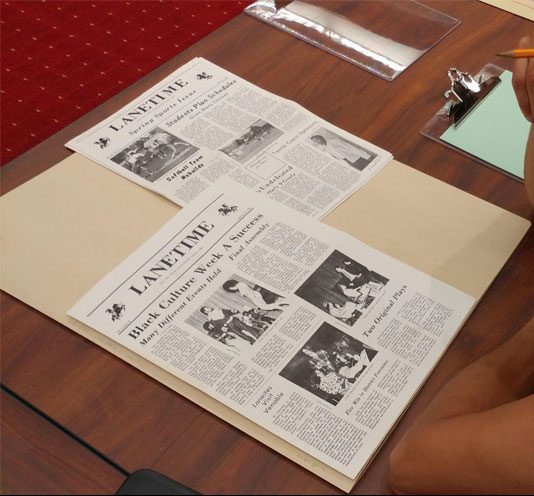In August, I was fortunate to attend a 3 day Professional Development institute led by Teachers in the Movement, which covered Black history and current events, and how to teach a more inclusive history course.
One of the main themes of the institute was about the multiple perspectives that any one historical event can have, and that a history book often has a limited or single lens by which it represents events, and often it is skewed to be favorable to what would be comfortable or understood by the majority (generally: White people). This is a theme that was also covered in depth in my Education School course on teaching history, where we looked at different primary sources, and then delved into how looking at history through primary sources created by children could take our understanding in an entirely new direction. I have worked hard in my teaching career to make sure that students have a variety of sources, not textbooks, in which to form their understanding of- and questions about history. I am aware of bias not just in news and current events, but in representation of history, and I think it is important to confront this, make students aware that it exists, and help them to learn how to find multiple perspectives in order to form their own understanding.
Drawing from this, and the perspectives surrounding historical events and time periods, oral histories are an invaluable source of information, memory, and perspective. When you have an opportunity to hear about an event from multiple people who experienced it, and to use those oral histories in order to form your own broader understanding of what happened, do it!
[Author’s school is] a microschool with a diverse student body, with a focus on the value of community and differing perspectives in order to create a more knowledgeable and socially adept individual. We are a storefront property located in historic Barracks Row of Capitol Hill, DC. We have an indexed tuition that is calculated individually for each family, ranging from $2,000 to $20,000 per year. The aim is that a diverse student body, representing different neighborhoods, families and experiences around the city, will teach a level of mutual respect and listening to different perspectives that might otherwise be the case in more homogenous public schools or private schools.
Using this basis of our school model, along with the idea of historical perspectives, we can and should tie the two together in a collection of the history of our community. We immerse ourselves in the local community daily- walking to the public park, checking out books from the public library, using local businesses to learn art, music, drama and sports. Our neighbors range from old to new restaurants and stores that have seen the neighborhood, culture, and mood of the city change of the years. What a valuable wealth of knowledge right at our front door. We will have the students become even more integrated with the community by taking oral histories of our neighbors and fellow community members over the course of the year. We will collate those histories, along with those of our students (first and second year) to create a long-term and modern history of our 4 block walk of Capitol Hill. The students will use the collection of histories to write or present an end-of-year celebration of our community, where they will provide their own interpretation of the history of DC, how it has changed, and where it is now. It will be fascinating to see how each student’s interpretation and perspective overlap or differ from one another, while all having heard or experienced the same accounts from around the community. That will be a lesson within itself.


